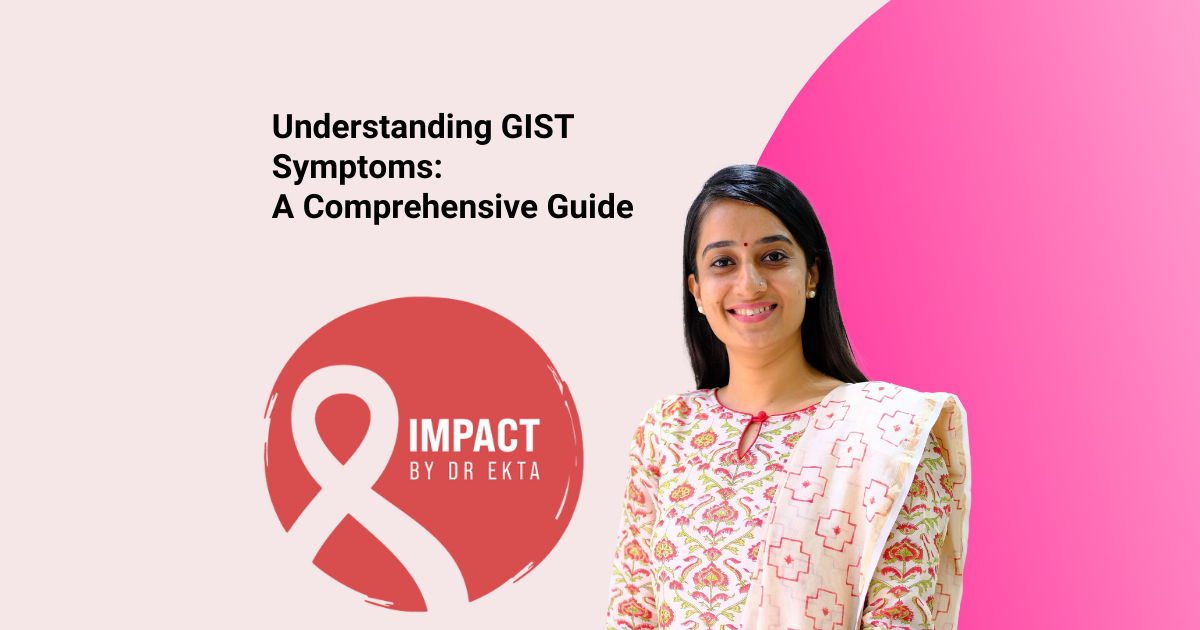As an oncologist, I understand that facing a diagnosis of gastrointestinal stromal tumors (GIST) can be daunting. GISTs are rare tumors that originate in the digestive tract, most commonly in the stomach or small intestine. One of the challenges with GISTs is that their symptoms can be vague and often overlap with other gastrointestinal conditions. In this blog, I aim to provide a comprehensive guide to understanding GIST symptoms to help you recognize them early and seek appropriate medical advice.
What Are GISTs?
Before diving into the symptoms, it’s important to understand what GISTs are. GISTs are tumors that arise from the interstitial cells of Cajal, which are responsible for regulating gut motility. These tumors can vary in size and may be benign or malignant. The most common site for GISTs is the stomach, followed by the small intestine, but they can also occur in the colon, rectum, or other parts of the digestive tract.
Common Symptoms of GISTs
GIST symptoms can be quite varied, and not everyone will experience all of them. Here’s a closer look at some of the common symptoms associated with GISTs:
- Abdominal Pain or Discomfort: One of the most frequent GIST symptoms is abdominal pain. This pain can be persistent or intermittent and may range from mild discomfort to severe pain. The pain is often due to the tumor growing and causing pressure on surrounding tissues or organs.
- Feeling Full Quickly: Many individuals with GISTs report feeling full after eating only a small amount of food. This sensation occurs because the tumor can occupy space in the abdominal cavity, reducing the stomach’s capacity.
- Nausea and Vomiting: GISTs located in the stomach or small intestine can lead to nausea and vomiting. This is often a result of the tumor obstructing the normal passage of food and digestive juices.
- Unexplained Weight Loss: Sudden and unexplained weight loss is another symptom that can be associated with GISTs. This occurs due to the body’s increased energy expenditure in response to the tumor, combined with potential loss of appetite.
- Anemia: Some GISTs cause bleeding in the digestive tract, which can lead to anemia. Symptoms of anemia include fatigue, weakness, and pale skin. If you notice these signs, especially if accompanied by gastrointestinal symptoms, it’s essential to consult a healthcare provider.
- Visible Mass or Lump: In some cases, a GIST may be large enough to be palpable as a mass or lump in the abdomen. This can often be felt by physical examination or may even be visible through imaging studies.
- Gastrointestinal Bleeding: Bleeding can occur internally due to the tumor. This might manifest as black or tarry stools or vomit that looks like coffee grounds. Gastrointestinal bleeding requires immediate medical evaluation.
- Difficulty Swallowing: If a GIST is located in the esophagus or near it, it might cause difficulty swallowing or a sensation of something being stuck in the throat.
Recognizing Symptoms Early
Recognizing GIST symptoms early is crucial for effective management and treatment. However, these symptoms can be easily attributed to other, more common gastrointestinal issues. This is why it’s important to consult with a healthcare provider if you experience persistent or worsening symptoms. Early diagnosis can significantly improve the chances of successful treatment.
Diagnostic Approach
If your symptoms suggest the possibility of a GIST, your healthcare provider may recommend several diagnostic tests:
- Imaging Studies: Techniques such as ultrasound, CT scans, or MRI can help visualize the tumor and determine its size and location.
- Endoscopy: This procedure involves inserting a flexible tube with a camera into the digestive tract to view and possibly obtain a biopsy of the tumor.
- Biopsy: A tissue sample is analyzed to confirm the presence of GIST and to check for specific genetic mutations associated with these tumors.
Treatment Options
Treatment for GISTs often involves a combination of surgery and targeted therapy. The specific approach depends on factors such as the tumor’s size, location, and genetic characteristics. Surgery is the primary treatment method, aiming to remove the tumor and surrounding tissue. Targeted therapy, such as imatinib (Gleevec), can be used to target specific molecular abnormalities associated with GISTs.
Living with GISTs
Receiving a diagnosis of a GIST can be overwhelming, but it’s important to remember that there are treatment options available. Support from a medical team, including oncologists, surgeons, and other specialists, is crucial. Additionally, connecting with support groups or counseling services can help you navigate the emotional and practical challenges of living with a GIST.
Final Thoughts
Understanding GIST symptoms is the first step in seeking timely medical attention and ensuring the best possible outcomes. While the symptoms can be nonspecific and overlap with other conditions, being aware of them and discussing them with a healthcare provider can lead to early diagnosis and effective treatment. Remember, if you experience any of the symptoms mentioned, especially if they persist or worsen, don’t hesitate to reach out to your healthcare provider for further evaluation.
GISTs are complex, and each case is unique. If you have concerns or questions about GIST symptoms, please seek advice from a medical professional who can provide personalized guidance based on your individual situation.
Thank you for taking the time to read this comprehensive guide. Your health and well-being are of utmost importance, and understanding symptoms is a crucial part of maintaining them.

